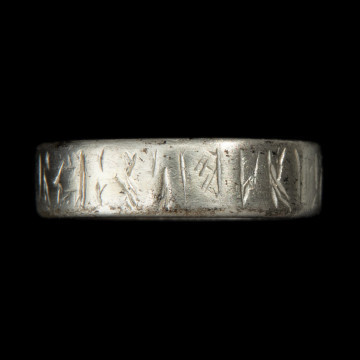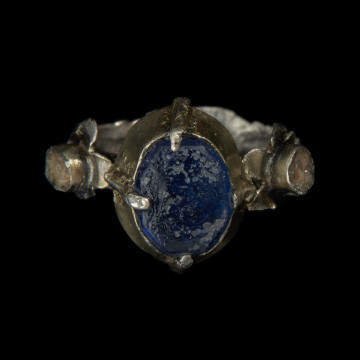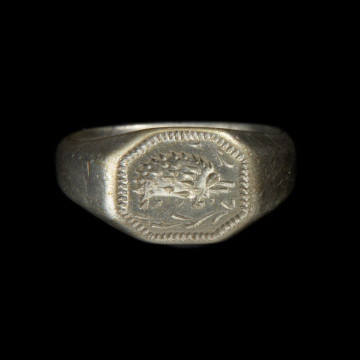
Wedding ring
przełom XIV i XV wieku
National Museum in Szczecin
Part of the collection: Szczecin treasure from Podzamcze
The belt was an essential and valuable element of clothing in the Middle Ages, often bequeathed and inherited from generation to generation. It emphasized the property status of the person who wore it and the functions they performed in society. It consisted of a leather or textile belt and buckles or clasps. Many items were additionally decorated with metal appliqués and reinforcing hardware, on which heavy keys, purses and sometimes unique bags with wide threads were hung. In the 14th -15th centuries, the wealthiest people owned belts with gold appliqués, and, after the invention of the technique of metal gilding at that time, silver ornaments were gilded with amalgam, i.e., mercury and gold. The surface of a silver object was thoroughly cleaned, then heated and covered with amalgam. Mercury evaporated under the influence of the temperature, and the object got covered with a thin layer of gold. Late medieval gilded belt fittings were part of a treasure discovered in 1999 in Szczecin's Podzamcze area. These ornaments have no signs of wear. They probably belonged to a local patrician and were family property. Among them was a fitting formed from acanthus-like leaves and lilies. Plant motifs were among the most popular ornamental motifs in medieval goldsmith's craft. The manufacturing technique and the character of the fitting ornamentation testify to the high skills of the jeweller who made them, but also the refined taste of the person who ordered them.
Małgorzata Peszko
Author / creator
Dimensions
cały obiekt: height: 6 mm, width: 19,8 mm, diameter: 18,1 mm
Object type
menswear
Creation time / dating
Creation / finding place
Identification number
Location / status

przełom XIV i XV wieku
National Museum in Szczecin

National Museum in Szczecin

przełom XIV i XV wieku
National Museum in Szczecin
DISCOVER this TOPIC
Museum of King Jan III's Palace at Wilanów
DISCOVER this PATH
Educational path